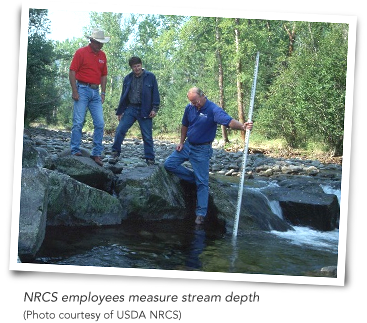Since the 1990’s, the Deschutes River Conservancy (DRC) has spearheaded efforts to keep more water in Deschutes Basin streams, including Whychus Creek. The approach used by DRC involves a combination of leases, water rights transfers, and conservation projects.
Scott McCaulou, program director for the DRC, reflects on efforts in Whychus Creek: “If you sit back and look at it from a distance it’s been a series of really small, kind of grinding increments of water, a little bit at a time and its starting to add up to something substantial.” McCaulou is hopeful about a new project that will give DRC endeavors at Whychus Creek a significant advancement -- it will allow for an additional six cubic feet per second of in stream flow, an amount that equals 25% of the DRC’s summer low flow target for the creek.
This $2.1 million project is a partnership between the Three Sister Irrigation District (TSID), the Upper Deschutes Watershed Council, the U.S. Forest Service, and the Deschutes Basin Land Trust.
The project involves modifying the intake structure for the irrigation district’s canal, and enclosing the canal itself. Over its four-mile course, the canal loses 50% of its water to seepage into the Deschutes Basin’s permeable volcanic soils and basalt bedrock. By replacing the canal with a series of pipes, water will no longer be lost to the ground. The project will eliminate water loss, reduce the district’s maintenance and operating costs, and allow the district to transfer some of its long-held water rights. Some of these rights are to be transferred to the DRC to supplement instream flow. The project is slated for completion in spring 2011.

